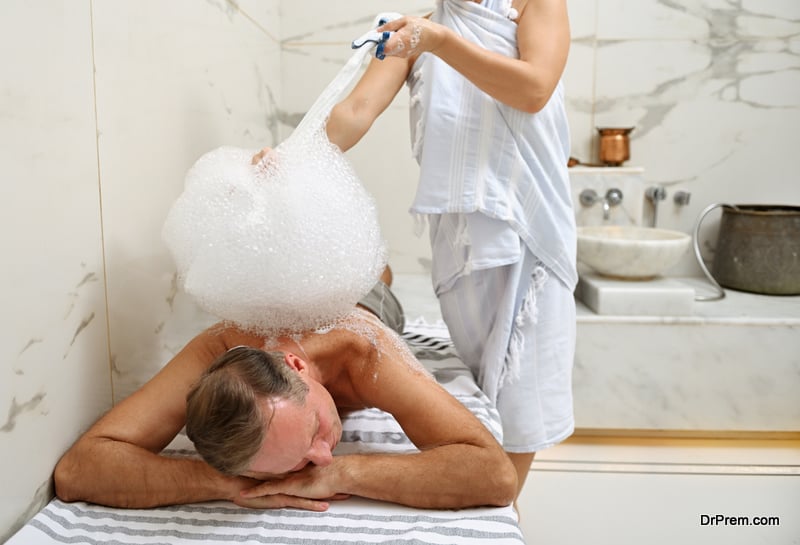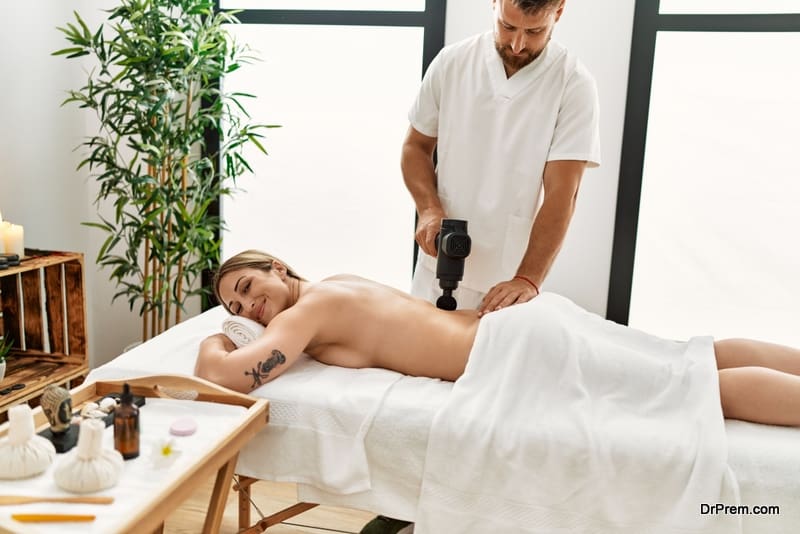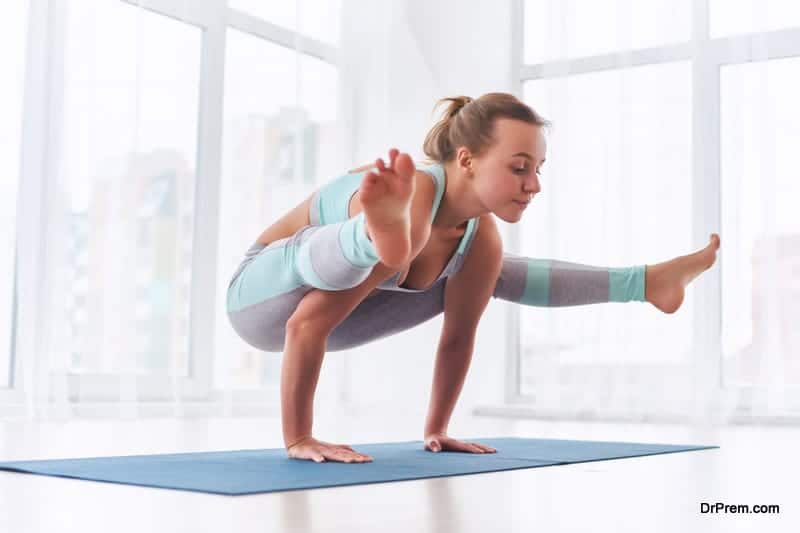Have you ever soaked yourself in a long hot tub bath and felt the best of your life after that? I’m sure you did! How about if I tell you that this technique can actually enhance your mental health along with treating various kinds of health problems.
Hydrotherapy is a treatment that uses hot, warm, and cold water in various methods to provide you with amazing benefits. This guide will tell you everything that you should know about Hydrotherapy and why you need to try it.
You will learn about the following in this wellness guide:
Complete Guide to Hydrotherapy by Dr Prem – Origin, Benefits, Methods, Safety Measures, Ways For Home Practice And More
-
-
What type of treatment is Hydrotherapy?
-
Origin of Hydrotherapy
-
What are the different Types of Hydrotherapy?
-
What are the benefits of Hydrotherapy?
-
Diseases that can be treated with Hydrotherapy
-
What equipment and Tools are required for Hydrotherapy?
-
Hydrotherapy Pool-based Exercises
-
Is hydrotherapy the same as swimming?
-
What is the difference between Hydrotherapy and Physiotherapy?
-
How does Hydrotherapy for joint pain works?
-
How can you do Hydrotherapy at home?
-
What is Hydrotherapy Shower?
-
Who should avoid Hydrotherapy treatment?
-
Major Precautions for Hydrotherapy
-
Who provides Hydrotherapy?
-
Best destinations for Water-based Wellness Therapies
-
What type of treatment is Hydrotherapy?

The procedure of this therapy uses water for stimulating the nerves located on the surface of the skin. This stimulation of the nerves works on the immune system, energizing it and increasing the digestion process, production of hormones, stress reduction, and management of pain. Hydrotherapy is also a proven complementary therapy to treat various other diseases.
Origin of Hydrotherapy

Father Sebastian Kneipp is considered the father of Hydrotherapy. He used the concept of using water to eliminate waste from the body for treating varied diseases.Although, there were lots of creams, potions, and counter pills that would help to relieve pain but Hydrotherapy was believed to be the only natural cure for making the same happen.
Over time, hydrotherapy started gaining popularity. It was used in the U.S hydropathic facilities for the first time in the year 1840. Hydrotherapy has evolved and developed ever since and today encompasses different forms. People all over the world loved this concept and also started using it for treating their dogs.
What are the Different Types of Hydrotherapy?
- Sitz bath
- Saunas
- Steam baths or Turkish bath
- Hot and cold water compresses or wraps
- Wet soak treatment
- Aquatic exercises
- Water Circuit therapy
- Hot fomentation
- Warm and cold baths
What are the benefits of Hydrotherapy?
Hydrotherapy provides many benefits. At the basic level, the therapy has proven benefits in reducing stress and providing relief from chronic ailments, muscle soreness, and pain. The procedure of the treatment may depend on the disease or problem that needs to be treated.
Some benefits of Hydrotherapy are:
-
Pain reduction –
Warm water eases the signals for pain by relaxing muscles and increasing the blood flow which eventually reduces the pain. As per a study, warm water used in spas showed a significant reduction in pain in patients with chronic diseases of connective tissues and the musculoskeletal system.
-
Improved Mental Health

-
Low Impact treatment

-
Recovering from heavy workouts
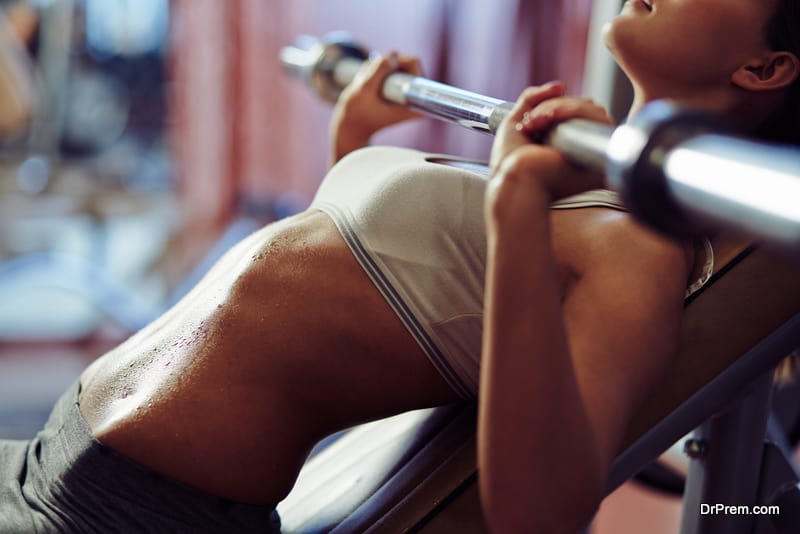
-
Arthritis Symptoms
A study was performed on patients with rheumatoid arthritis. A group of people was engaged in aquatherapy exercises at moderate intensity while continuing their medical treatments. The result showed decreased oxidative stress and improved markers of the disease. Hydrotherapy can be beneficial for some other types of arthritis as well.
-
Pregnancy & Labor

Diseases that can be treated with Hydrotherapy
One can have the treatment of Hydrotherapy in wellness resorts,and WellnessSpas, or can also practice hydrotherapy at home as self-care. Different treatments are used depending on the diseased conditions, including:
- Rehabilitation from injuries and stroke
- Respiratory infection
- Rheumatoid Arthritis and other joint and muscular disorders
- Insomnia
- Stress and anxiety
- Headache
- Diabetes
- Fatigue
- Hyper or low blood pressure
- Respiratory –colds, asthma, bronchitis
- Fast recovery from various disease
What Equipment and Tools required for Hydrotherapy?
While Hydrotherapy can be practiced simply by sitting and soaking in a warm bath or using contrast Hydrotherapy bath or shower. These types of practices can also be done at home. However, other practices of Hydrotherapy involve the use of specialist equipment and locations. The type of procedure used for the treatment will completely depend on the goal of the treatment and analyses by the practitioner.
Specialized equipment that Hydrotherapy may include are:
- Whirlpool Bath – These are water-filled large baths that also have air jets for creating a swirling motion. These are usually used for treating conditions like joint pain, muscle soreness, and arthritis.
- Underwater treadmill – It is the best way to perform low-impact physical exercise that effectively increases mobility of the patient. These high-tech aquatic treadmills give an ideal surface for weight loss and also provide you with a unique experience.
- Underwater Cycle – It is a specially designed underwater cycle that is suited for rehabilitation purposes at any phase with equipped variable resistance mechanism. It is useful to treat certain physical ailments in people.
- Jacuzzis – Jacuzzis are almost the same as whirlpool baths, except that the air jets in these pools are more powerful and creates a stronger massage. Jacuzzis are also one of the common features in the wellness resort and spa business as they help in reducingstress, tension, and headaches.
- Foot Spas – These are basically small warm water-filled tubs that provide circulation to the feet. It helps in relieving foot pain and improves blood circulation.
Hydrotherapy Pool-based Exercises
Multiple benefits of Hydrotherapy can be obtained through exercises performed in water. The weightless aquatic environment allows pain-free movements by taking off the load on your joints. It helps to improve flexibility. This environment of water also strengthens ligaments, muscles, and bones. Pool-based exercises are also a great way for improving your cardiovascular fitness and balance without any risk of injury or falls.
You can find these exercises in places that provide hydrotherapy. You can visit spas and wellness resorts, etc. You can also seek the help of a wellness resort consultant if you are planning to include hydrotherapy in your wellness resort, hotel, and spa. If you wish to undergo hydrotherapy, it is advised to consult your doctor. The below-mentioned pool-based exercises are some of the commonly used exercises in hydrotherapy.
They are:
-
Side Stepping

-
Arm raises
Stand in neck-deep water level. Keep your hands down on your sides. Now, bring out your arms straight forming the shape of the letter ‘T’ with your body. Then push the hands back down on your sides. This exercise can also be done by raising your hands straight up in front of you. Repeat 3 sets of this of 10.
-
Standing knee lifts
Touch your both feet on the bottom and stand facing the pool wall. Stay in the same position and lift up your left knee as if you are marching. While your knee is atthe level with your hip, straighten your knee and leg in front of you. Continue bending and straightening your knee 10 times. Do the same with your right knee. Repeat 3 sets of this exercise 10 times each.
-
Forward lunges

-
Water planks
Stand in the water that is at least at your shoulder level. Now hold a foam noodle right in front of you and lean forward on the noodle on your elbows. Your body should be in a plank position at this time, submerged sightly in the water while your elbows stay perpendicular to the pool’s bottom. Make sure your feet remain touched on the floor of the pool. Now hold this position anywhere between 15 to 60 seconds depending on your comfort and core strength. Repeat 3 sets of this exercise.
-
Pushups
Stand facing the poolside and place your shoulder width in front of the edge of the pool. Hold the edge with bending elbows and bring down your chest till it touches the side of the pool. Hold this position for 3 to 5 seconds and then do the push-up by making your elbows straight and then back in the starting position. Repeat 3 sets of this with 10 push-ups each. You can switch difficulty levels up mobbing down or deeper to the shallow pool end.
-
Single leg balance

-
Standing donkey kicks at the pool walls
Your lower part of the body needs to be submerged in the water completely for this exercise. Stand in the pool looking down while taking the support of the pool walls on your one side. Now swing the leg that is away from the poolside like you are kicking. Keep your knee straight while swinging the leg and then return back to the straight position. Repeat 3 sets of 10 times each leg.
-
Water walking or jogging
Stand in the pool that has water at your chest-deep level. Now start walking forward along the bottom of your pool and then walk backward again. You can increase the intensity of this exercise by increasing the speed or jogging. It is advised to jog for 30 seconds followed by a walk for 30 seconds for a nice workout. Continue this exercise for 5 to 7 minutes.
-
Deep water bicycle

Is hydrotherapy the same as swimming?
Swimming differs from hydrotherapy in one aspect, that is, hydrotherapy includes spas and exercise benefits.Not only do they provide fun but also are very relaxing to get rid of the daily stress and discomfort caused due to our busy working schedules. The swimming pools combined with the benefits of a spa allow you to swim, exercise, and get hydrotherapy benefits all in one single pool.
The innumerable advantages include reduced cleaning, heating, and maintenance, less space requirement, less construction, and eliminates the need for expensive vapor control systems,unlike just a swimming pool.They provide therapeutic benefits to people with physical limitations also. These types of hydrotherapy seem to be more useful for people who are recuperating from their wounds or injuries.

What is the difference between Hydrotherapy and Physiotherapy?
Both therapies are incredibly effective and applied to maintain, enhance, or restore the function, mobility, and well-being of a person. Whether it is used for treating diseases or just for better physical health, physiotherapy and hydrotherapy have various benefits. The only difference between Hydrotherapy and Physiotherapy is that Hydrotherapy includes the use of water as the prime element, whereas physiotherapy does not.
Physiotherapy encompasses various modalities of treatments such as massages, exercises, electrotherapy, and advising and educating a patient for treating ailments deformities, or injuries. It is also commonly advised by doctors for physical rehabilitation as well. Physiotherapists usually recommended hydrotherapy for treating musculoskeletal conditions or to help a patient restore walking or exercising after a trauma.
Here are some types of Physiotherapies:
- Neurological physiotherapy
- Cardiopulmonary physiotherapy
- Orthopedic physiotherapy
- Geriatric physiotherapy
- Pediatric physiotherapy
Often people have this question that which therapy is better, physiotherapy or hydrotherapy? Well, the answer depends on the goals of the required condition. Your doctor may suggest hydrotherapy directlyas the initial treatment or can advise it after your physiotherapy as per your specific needs. Moreover, Hydrotherapy has the bonus benefit of providing relaxation and relief from mental stress.
How does Hydrotherapy for joint pain works?
Hydrotherapy for joint pain is very effective and is highly recommended for people with arthritis and joint pain problems. The passive and active movements performed in the hydrotherapy pool increase blood circulation and eases the pain in the muscles and joints. Also, the hydrostatic pressure in the water helps in reducing any swelling as well.

Some of the main factors that make hydrotherapy work are:
Buoyancy of water – As the water supports your body weight, being in the water helps to take off the pressure from your joints. It is the best option for weight-bearing joints such as knees, hips, and ankles, especially after injury or surgery like fractured bones or knee replacement.
Warmth of the water – The heated water in the hydrotherapy pool provides therapeutic benefits by keeping the muscles warm and relaxed post the exercises. The typical temperature of a hydrotherapy pool is about 33 degrees and works deeply in relieving pain in your joints, bones, and muscles.
Water Resistance – The resistance of water helps in strengthening your body, without causing any pain. It treats and makes your knee and other joints stronger and increases its mobility. However, water resistance can also make you feel tired after the exercises. Thus, it is advised to start with short sessions as per your comfort level.
How can you do Hydrotherapy at home?

You can soak yourself in warm and relaxing water while you swim and exercise against a current, all-in abundant space.The best, most attractive feature of this product is that you do not require a full-sized swimming pool and spa that are not at all space efficient but require a large area. You can install gadgets like these at your home to easily steam away tension, stress, pain, and health issues.
What is Hydrotherapy Shower?

The alternation between the hold and cold gets your lymphatic system fluids moving. In this process, the hot water expands your vessels making them bigger, while the cold water constricts them making them smaller. This pumping effect of these vessels results in stimulating fluid metabolism. This easily can be done at your home, just by standing under your shower by switching the temperature of water from hot to cold.
For doing this on your own, make sure you stand under hot water for a couple of minutes and under hot water for one to two minutes. Repeat this alternation of water for 20 minutes, until your skin feels sufficiently pruney, making you feel as if you have just walked out of an amazing spa. Hydrotherapy shower is suitable for literally anybody, as it is just a great alternative to a basic bathtub or one-tiled shower.
Who should avoid Hydrotherapy treatment?

- Cancer
- Kidney disease
- Decreased sensitivity to hot or cold
- Inflammations from acute injuries may not be safe in warm waters.
- Emergency acute conditions that may need immediate care like stroke or attack
- Risk of hypoglycemia
- Diabetes
- Fever
- Pregnancy
Major Precautions for Hydrotherapy
- Mind the water temperature. Water has a natural heat capacity that is 1000 times more than air and can transfer the heat 25 times faster. It is essential to keep the correct temperature to prevent severe burns.
- The water temperature should also be regulated depending on the tolerance capacity of an individual. The tolerance levels may change from treatment to treatment as per the degree of an injury or illness, body temperature, and emotional state of a person.
- The time of applying the hot and cold water can also vary. If the hot water is applied for 5 minutes then the cold should be applied for 1 minute. The cold applications of water need to be shorter than the hot ones. The hot water should be lukewarm and not very hot.
- Please remember that you must avoid applying any hot, cold, or ice directly on the skin after the hydrotherapy treatment. You may use a towel as a barrier between the cold or hot agent to prevent any damage to the skin or nerves. Any punctured hot or cold packs must be discarded immediately, as the chemical gel/ agent in the commercial packs will cause huge damage to your skin.
Who provides Hydrotherapy?

If you are opting for hydrotherapy through wellness tourism, you can ask your wellness tourism consultant to advise you on the best places that provide hydrotherapy. However, before you undergo the treatment, make sure the source of treatment and the practitioners are authorized and professionally trained.
Best destinations for Water-based Wellness Therapies
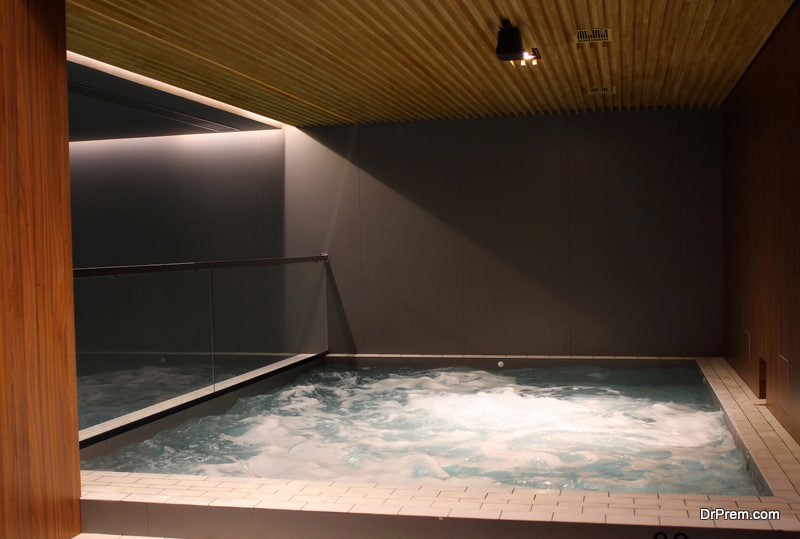

- The Springs Resort – Pagosa Springs, Colorado
- Arizona Biltmore – Phoenix, Arizona
- Carillon Miami Wellness Resort – Miami, Florida
- The American Club – Kohler, Wisconsin
- Boulders Resort and Spa – Carefree, Arizona
- Miraval Resort and Spa – Tucson, Arizona
- Fontainebleau – Miami, Florida
- Alyeska Resort – Girdwood, Alaska
- The Lodge at Woodloch, Pocono Mountains, Pennsylvania
- The Boca Raton – Boca Raton, Florida
- Civana Wellness Resort and Spa – Carefree, Arizona
- Ojo Caliente Mineral Springs Resorts and Spa – Ojo Caliente, New Mexico
Summary
Hydrotherapy is the use of water in any method for treating various symptoms. It can also be called pool therapy, aquatic therapy, or water therapy. The treatment provides innumerable benefits by easing pain, treating ailments, and relaxing the body, mind, and soul. Its simple form can be done dependently at home and may require the use of a specialized pool. Hydrotherapy can be done in several types including many in-water exercises. However, should be done after consulting a doctor only.





